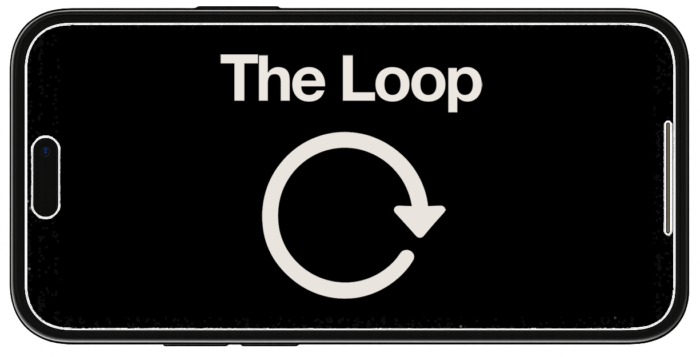Before you’re able to configure the eight web events you’ll use for optimizing your Facebook ads, you first need to verify your domain.
There’s plenty to explore here. In this post, we’ll discuss…
- Why you need to verify your domain
- How to verify your domain
- Why you may not be able to verify a domain
- A possible alternative
We’ll walk through how to verify your domain. But a big obstacle that many advertisers are facing is that they do not own the domain. In this case, they can’t verify the domain, can’t configure events, and won’t be able to optimize for those events.
I conducted an experiment and make some guesses about what is happening and what Facebook will or might do about this problem.
Let’s go…
Why You Need to Verify Your Domain
Even before Facebook rolled out Aggregated Event Measurement and the 8-event limit in response to the iOS 14 tracking prompt, it was a good idea to have your domain verified. I even wrote a blog post about how to verify your domain so that you could edit Facebook post link previews.

Not only does verifying your domain allow you to edit link previews to your website, but you can also take control over which Facebook pages and advertisers are allowed to do it. It’s also been long rumored that Facebook would eventually remove the ability to edit link previews for ads unless you first verify the domain.
These are all good reasons to get your domain verified, but now it’s unavoidable. If you try to run a conversions campaign that optimizes for a web event, you’ll first need to get that domain verified — at least once the iOS 14 tracking prompt goes live.
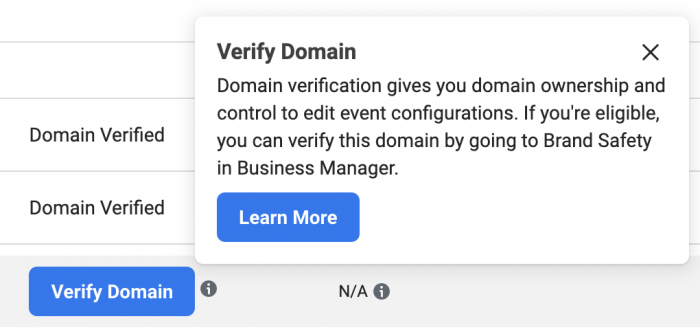
Let’s go through the three methods to do that now.
Three Ways to Verify Your Domain
Either click the button within Web Event Configurations to verify your domain or go to Facebook Business Settings. On the left side, click on “Brand Safety” and then “Domains.”
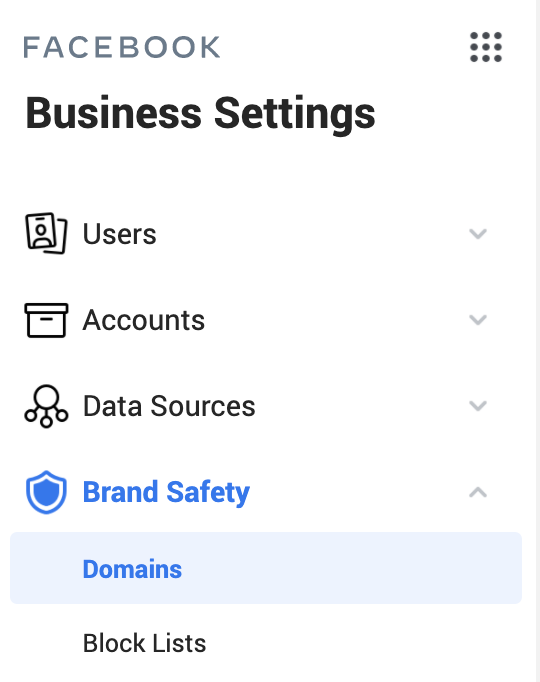
Click to add a domain.
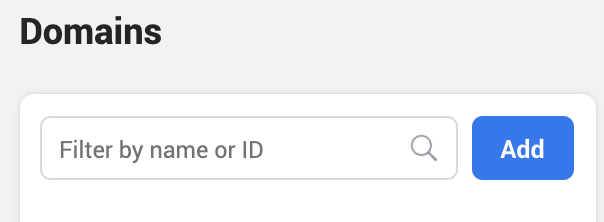
Enter the domain you want to verify and click “Add Domain.”
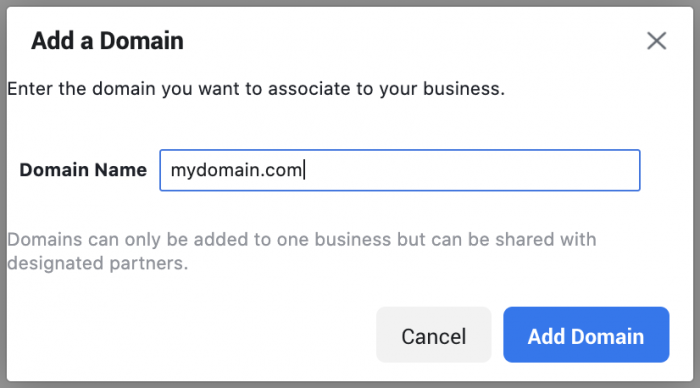
There are three different ways that you can claim and verify domain ownership.
1. Add a DNS text record to your domain host.
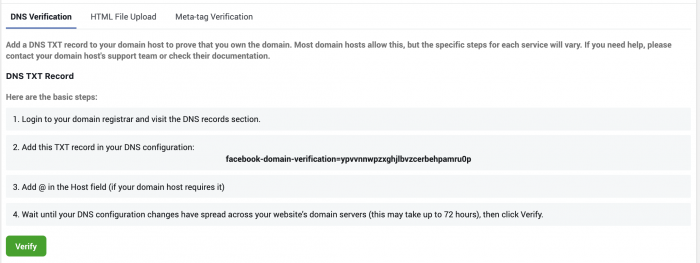
2. Upload an HTML verification file to your website.
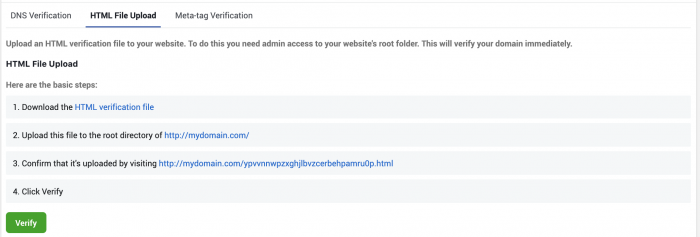
3. Set the meta-tag containing the verification code into the header section of your website’s homepage.

Feel free to send this to your programmer if you have one. If you’re looking for the easiest method, it’s likely either #2 or 3. For the third, there should be multiple ways to get access to the header of your homepage. Unfortunately, every website is different.
If you don’t know of any easy way, you can try the Head, Footer and Post Injections WordPress plugin.
Then, edit your homepage and paste the code Facebook gives you into the box for your header.

Once the page is saved, click the link in your Facebook Business Settings to verify. If you set it up properly, it will work!
The Problem: You Don’t Own the Domain
The approach we’ve covered so far works if you own your domain. You verify your own domain so that you can configure your web events… so that you can select one of eight standard events or custom conversions as your conversion event in the ad set. This allows you to optimize for that event rather than a link click or Landing Page View.
Great! But… What if you don’t own the domain? What if the purchase occurs on a third-party website?
I’m not referring to sites like Amazon that give you no access. I’m talking about third-party sites that allow you to provide your own pixel so that you can optimize for and track conversions that occur on that website, even though you don’t own the domain.
If a domain is owned and verified by another business, it will look like this on your Web Event Configurations page…

You’ll notice that “Edit Events” is grayed out. Hover over the first tooltip…
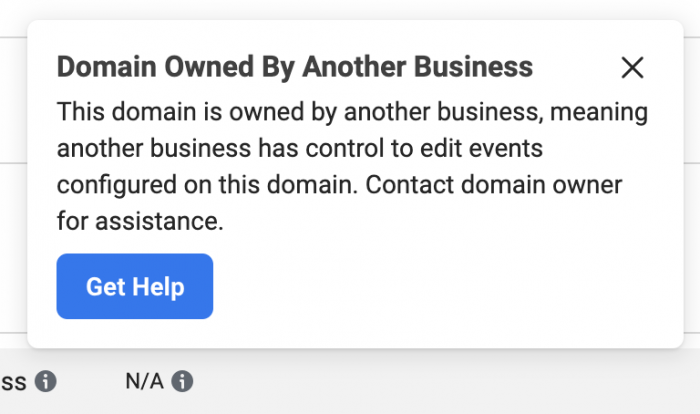
If you think that the “Get Help” button will be any help at all, think again. At least as of the time of writing this post, it’s only info for those who actually can verify their domain.
It’s not at all clear what Facebook expects the domain owner to do once you contact them. As you’re about to see, a domain owner can’t simply “give” access to the approved events. Other than having the domain owner share their pixel (not a good solution), what are they supposed to do?
Something is missing.
An Experiment
Facebook hasn’t yet provided any guidance for advertisers who are unable to verify a third-party domain. But the hole here is so great, it can’t be ignored.
I decided to create a little experiment. I asked Luke Elliott from my team to provide me a pixel that he owns (that is otherwise inactive) that I can add to a page of my website that uses events. I added it to a landing page that fires a ViewContent event.
Since I verified the domain, what would happen?
Not surprisingly, he isn’t able to configure events since I already did that.
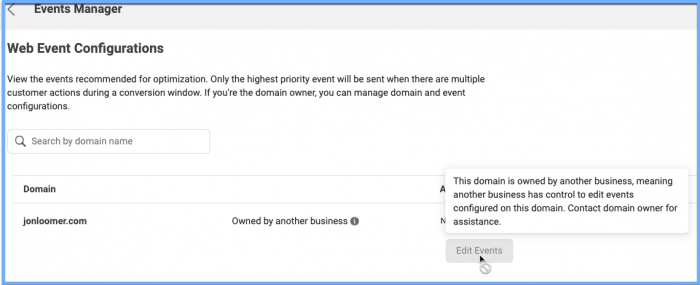
But, would he be able to select it as a conversion event once the iOS 14 tracking prompt goes live? Unfortunately, Luke still gets errors about not being able to configure or use the event.
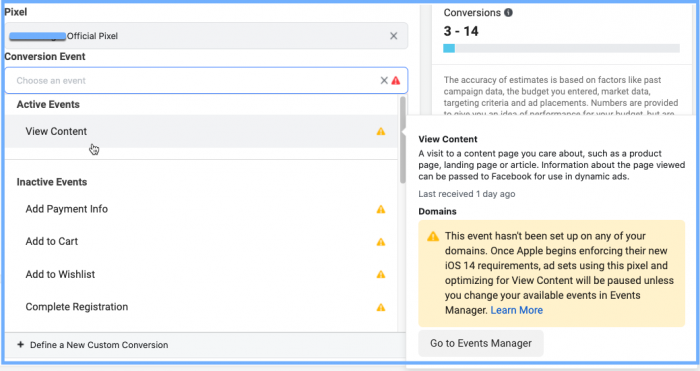
As of this moment, it currently appears as though anyone selling products while having their pixel on a third-party site will be unable to optimize for a conversion event.
Keep in mind, though, that my assumption is that Luke will still be able to track that event by customizing columns in Ads Manager and adding a column for a custom conversion based on that specific event (he’s not running ads for this, so I can’t confirm with 100% certainty).
It also appears he can create a website custom audience based on the pixel placed on my domain. Luke is even able to create a custom audience based on some of the custom events on my website.
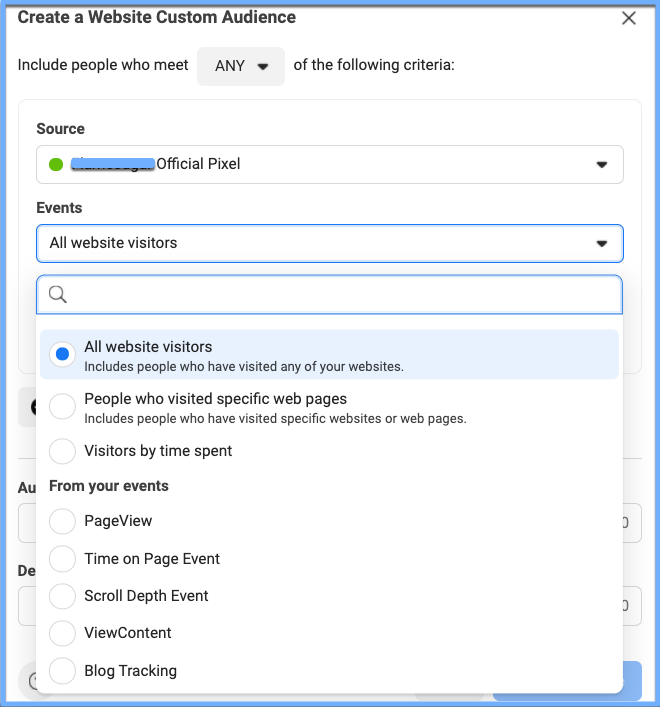
IMPORTANT POINT OF CLARITY: Luke can create a custom conversion or custom audience based on activity on the page where his pixel is on my website ONLY. The only reason these events from my site appear is that they fire on the same page where I added Luke’s pixel.
He will not suddenly get reporting, optimization power, or the ability to target users on any other pages of my website because he doesn’t have access to my pixel.
A Likely Bug or Oversight
Since the iOS 14 prompt is going live in early spring, Facebook still has some time. But for now, it’s going to get a whole bunch of advertisers into a panic.
If a seller has their pixel on a third-party domain, that domain is verified, and the domain owner configured the events, it only makes sense that the seller should be able to select the event that fires on their sales page as a conversion event in their ad set — assuming the domain owner selected that event as one of their eight.
This feels like a bug or oversight. Or maybe it’s something Facebook is working on. But they need to communicate their plans.
My guess is that they haven’t communicated it because they realize this isn’t so simple…
How This Could Work
Once you start thinking about how this would work for a third-party website that hosts thousands of sellers using thousands of Facebook pixels, you quickly realize the potential challenges.
Would such a platform still need to follow the 8-event limit? The workflow now only allows you to rank events by pixel. For example, if your website uses 100 different pixels that utilize the Purchase event, the domain owner wouldn’t be able to rank all 100 (only a max of 8).
Would the domain owner’s customers, who have their pixels on the website, be able to optimize for conversion events? The only way this seems possible is if such businesses could rank standard events independent of pixel ID. And even that could be challenging.
As of this moment, the Event Setup Tool allows you to create 17 distinct standard events. If a website has thousands of businesses selling products and collecting leads, what if more than eight events can or should be used?
While prioritizing eight events is challenging but mostly doable for a single business, consider how difficult it will be for a website hosting thousands of clients — assuming you offer many different templates for lead building and sales. What gets cut out? What is prioritized? What order will they be in? Will this even work?
This could be difficult. But that website would need to communicate it with their sellers so that they know what events they can use for optimization. And, of course, that may be different from client to client.
It gets messy quickly. Would Facebook make an exception for these websites?
The Alternative
While adding your pixel to other websites you don’t own has been a nice option for optimization, tracking, and audience building (before now), there may be another option — as long as these websites allow for it.
Until this gets sorted out, the best alternative is to redirect the conversion to a page that you own on your website. So, it might work like this…
- User views your product on the third-party website (you don’t own it)
- User provides payment info and submits
- Payment is submitted and the user is redirected to a thank-you page on your website (you own and verified it)
- Thank-you page includes your pixel and purchase event
- You configure your web events to include this event, possibly as a custom conversion
This may not be an option for everyone, but check to see if it is in the meantime.
Lots of Questions
The main thing to remember right now is that there remains plenty of confusion. Facebook isn’t clear about how much of any of this might work, and it’s possible that even they aren’t sure. So, the result is that we have to make reasonable assumptions and inferences based on what we know.
I could be way off on some of this. Facebook may also change how they do things prior to the iOS 14 tracking prompt going live. Time will tell.
Your Turn
Are transactions on a third-party website a potential issue for you due to the iOS 14 tracking update? How are you addressing it?
Let me know in the comments below!

